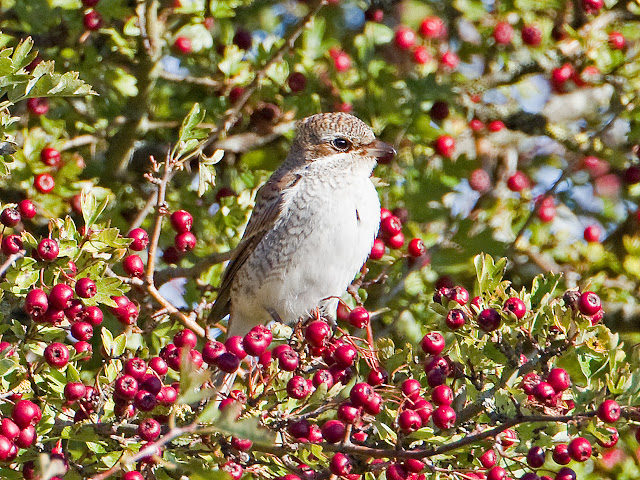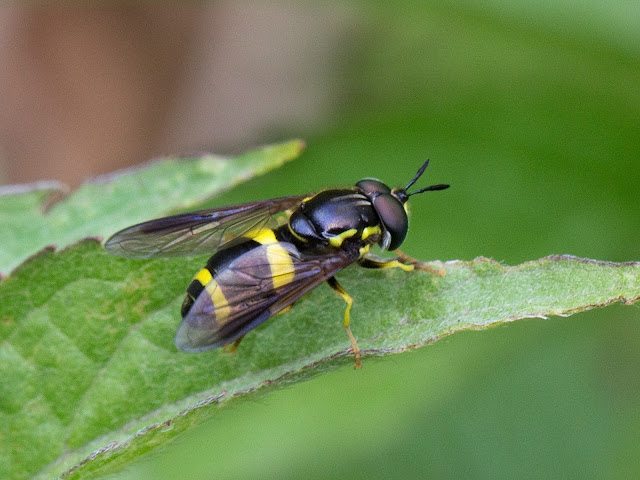Thursday was a good day. Not only was the weather perfect but I also had two life ticks. Insects unfortunately, rather than birds but I still came home with a smile on my face.
We had started off the day on Cissbury Ring looking for an early Ring Ouzel. No luck with that but we did have a secondary target, caeruleopunctata, aberrations of the Small Copper butterfly with a row of blue spots on its hind wings.
Aberrations giving variations in colour and markings are quite common in the Small Copper. In the wild these can be genetically inherited or the result of extreme conditions during the pupation stage. In previous years we had noted the caeruleopunctata aberation on Cissbury Hill, in late year third broods. I am not sure if this is just a result of when we end up looking for them or whether there is an underlying cause for it.
There were hundreds of Small Coppers flying, so if we searched long enough we were likely to be successful. We did eventually see a couple of examples although none were in really good condition.
 |
| Small Copper with just a hint of blue spots. |
 |
| caeruleopunctata aberration although unfortunately in worn condition. |
and one from a previous year in slightly better condition
 |
| caeruleopunctata |
Whilst searching for Small Coppers I also managed to find a new Shieldbug, Coreus marginatus, more commonly known as a Dock Bug and a life tick for me.
 |
| Dock Bug - Coreus marginatus |
Late, but still welcome, the Clouded Yellows have started to arrived over the past week. I was beginning to think they wouldn't appear in any numbers this year but I have seen five or six in the past few days. This being the first one that stayed still long enough for a picture.
 |
| Clouded Yellow |
By far the best sighting of the week were the Willow Emerald Damselflies at Warnham Nature Reserve. This species, common in southern Europe, is relatively new to the UK. The first specimen was collected in Kent in 1992 but was not identified until 2003. Then in 2009 a substantial population of 400 was identified in Suffolk and adjacent counties probably from an unrecorded influx from the Continent.
Since then they have spread rapidly and can now be seen in Sussex, both at Warnham and Woods Mills, although it is likely that they are far more widespread than this.
 |
| Willow Emerald Damselfly - Lestes viridis |
 |
| Willow Emerald Damselfly - Lestes viridis |
 |
| Willow Emerald Damselfly - Lestes viridis |
A rewarding day in what has been a less than spectacular Autumn around Sussex. Long may it continue.

















































